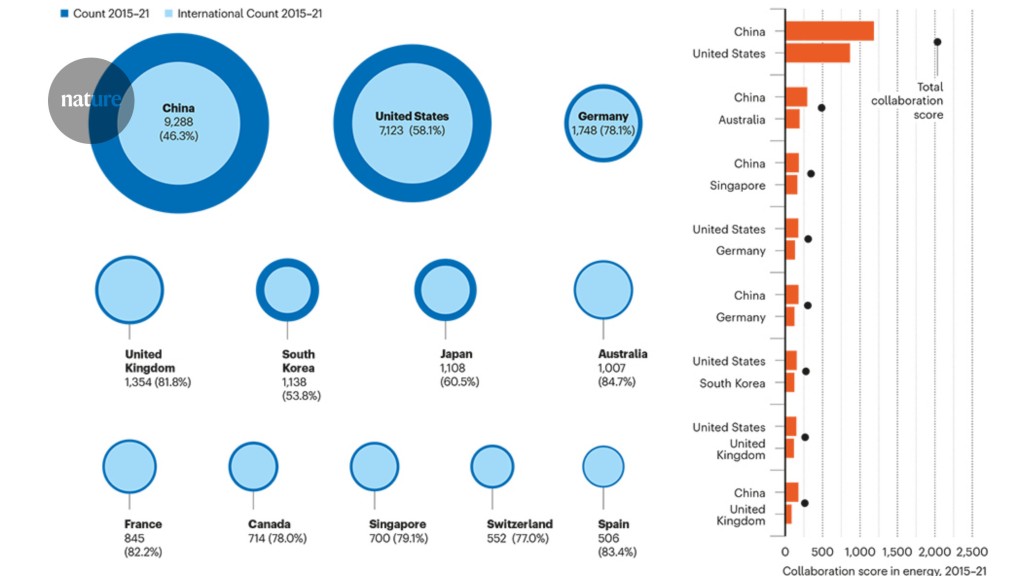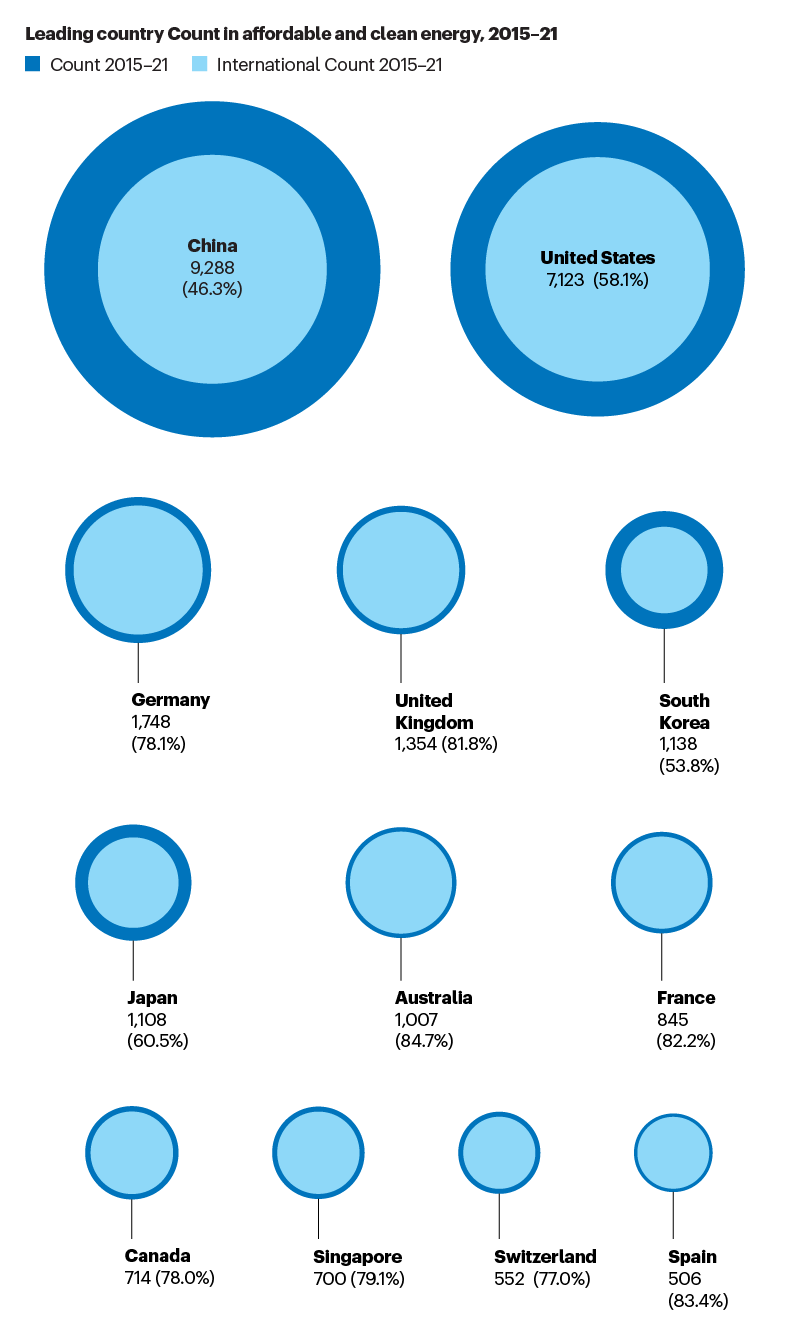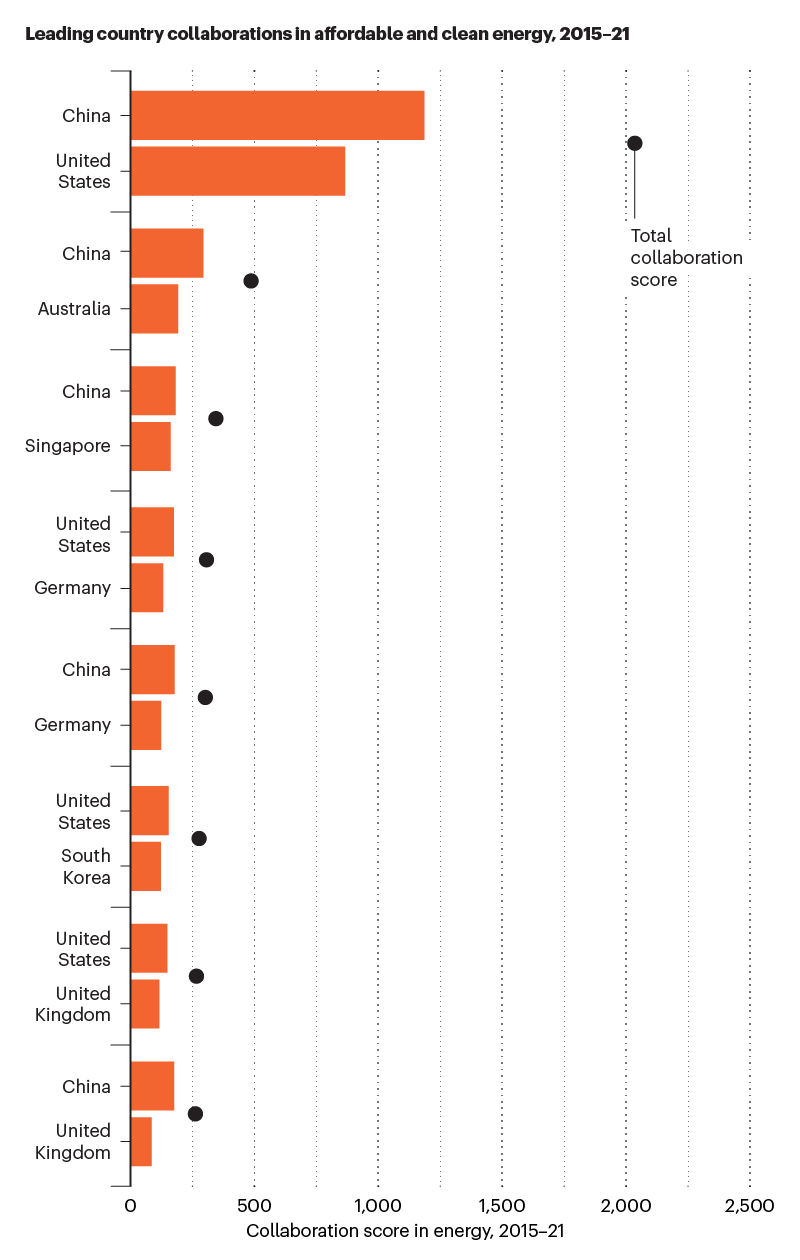Numbers can be deceiving. When looking at China’s level of international collaboration in the field of clean-energy research, a smaller proportion of its total article output (Count) comes from papers with an international collaborator compared with other countries in the leading 30. When looking at the location that other nations most frequently collaborate with, however, China is the most frequently cited partner. Both facts are simultaneously true thanks to the large number of articles that originate from China. This data visualization takes a broad and narrow look at collaborations in affordable and environmentally friendly energy research.
Calculating Count
The leading countries in the Nature Index by number of articles (Count) related to the United Nations’ Sustainable Development Goal (SDG) 7 (affordable and clean energy) are shown for the period 2015–21. Numbers in the circles show Count and the proportion of articles with international collaboration. More than 80% of articles published by France, Australia, Spain and the United Kingdom in the field had co-authors in other countries. China, by comparison, is the only country among the leading 30 to publish more articles without international co-authors than with them.
Country collaborators
The leading country collaborations for 2015–21 in energy-related output, including total and bilateral collaboration scores (CS). Owing to its high article output, China appears frequently in top collaborations, despite having published less than half of its total output (46.3%) with international co-authors.
Close connections
The three leading collaborations with international partners are shown for 2015–21. The Georgia Institute of Technology in Atlanta is a prolific American collaborator with Chinese institutions. It appears with five Chinese institutions in the leading 30 international collaborations.
This article is part of Nature Index 2022 Energy, an editorially independent supplement. Advertisers have no influence over the content.






More News
Publisher Correction: Interferon subverts an AHR–JUN axis to promote CXCL13+ T cells in lupus – Nature
We are junior scientists from emerging economies — the world needs more researchers like us solving global problems
Elusive high-energy neutrinos spotted at LHC